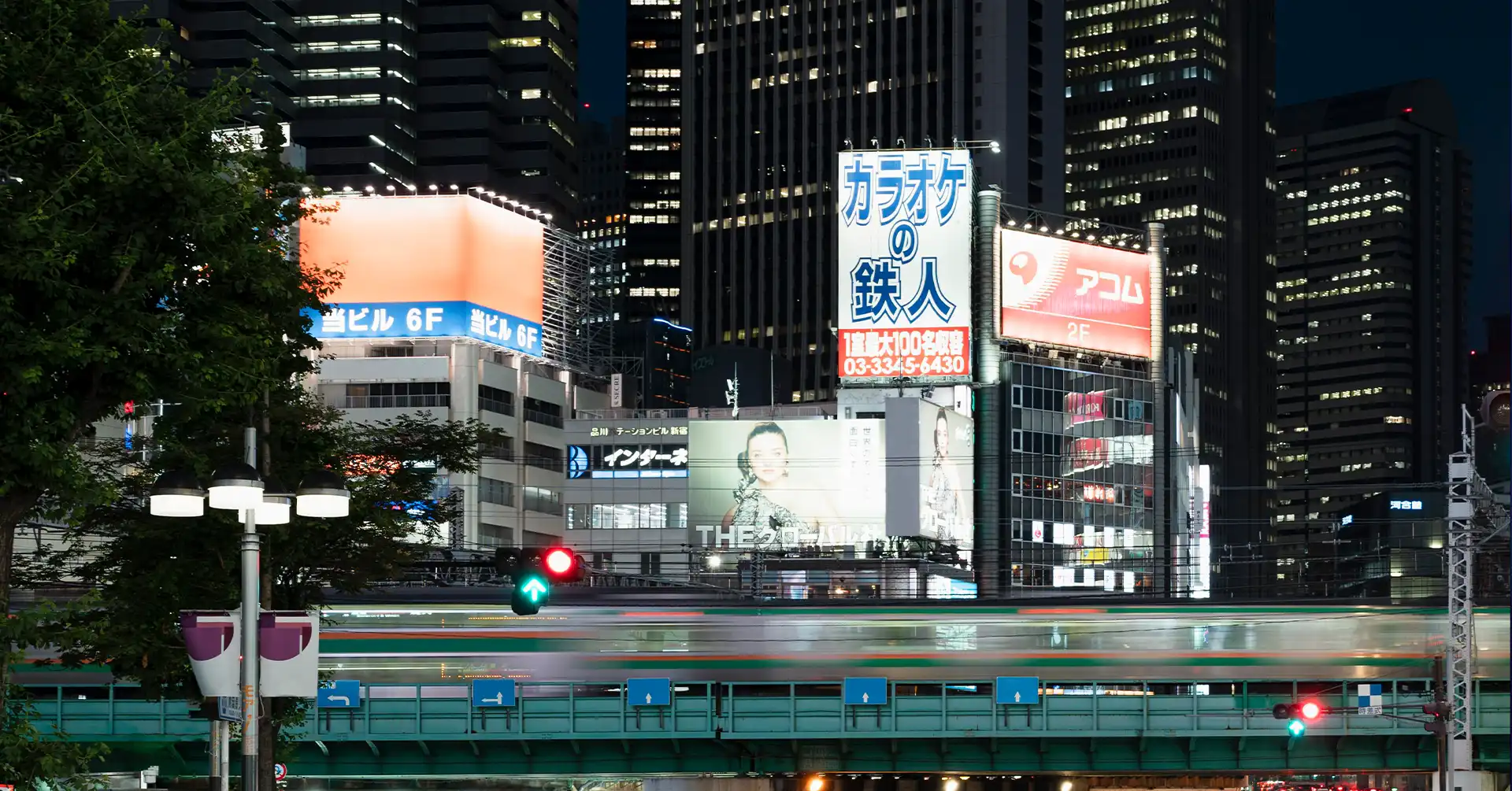Advertising is the lifeblood of modern business, a dynamic process that constantly evolves to capture the attention of potential customers. In today’s fast-paced world, traditional advertising methods often struggle to keep up with the demands of a digitally-driven society. This is where LED vans step in, revolutionizing the way businesses promote their products and services.
Definition of LED Vans
LED vans, short for Light Emitting Diode vans, are mobile advertising platforms equipped with high-resolution LED screens. These vans serve as moving billboards, displaying vibrant and eye-catching advertisements, videos, and messages. Unlike static billboards, LED vans are dynamic, capturing attention wherever they go. This mobility ensures that the message reaches a broader audience, making it an innovative and effective advertising solution.
Importance of Advertising in the Modern World
In a world inundated with information, advertising acts as a guiding beacon, helping consumers navigate through the multitude of choices available. It not only informs but also creates awareness, brand recognition, and loyalty. The modern consumer is discerning, seeking products and services that resonate with their needs and aspirations. Advertising bridges this gap, connecting businesses with their target audience, making it an indispensable tool for market growth and sustainability.
Significance of LED Vans in Advertising
The significance of LED vans lies in their ability to transform mundane spaces into dynamic marketing arenas. Whether it’s a bustling urban center, a busy shopping district, or a community event, LED vans bring advertising directly to the people. Their mobility ensures exposure to diverse demographics, maximizing the impact of marketing campaigns. By integrating technology and mobility, LED vans offer a unique and captivating way to engage consumers, making them a vital component in the contemporary advertising landscape.
Evolution of Advertising
Advertising has come a long way from its humble beginnings, evolving through various stages to meet the changing needs of businesses and consumers. Let’s explore the journey of advertising and how LED vans have become an integral part of the digital advertising landscape today.
Traditional Advertising Methods
In the past, advertising primarily relied on traditional methods such as print media, radio, and television. Billboards adorned highways, and catchy jingles echoed through radios, capturing the attention of potential customers. Print ads in newspapers and magazines were the go-to choice for reaching a broader audience. However, these methods had limitations. They were static, reaching only specific demographics, and lacked the interactive element that modern consumers crave.
Emergence of Digital Advertising
With the rise of the internet and technology, advertising underwent a paradigm shift. Digital advertising emerged as a powerful tool, leveraging the vast reach of the internet. Businesses started creating online ads, utilizing social media platforms, and optimizing websites for search engines. The digital landscape allowed for precise targeting, enabling advertisers to tailor their messages based on user preferences, behavior, and location. This targeted approach significantly enhanced the effectiveness of advertising campaigns, reaching the right audience at the right time.
Role of LED Vans in the Digital Advertising Landscape
Amid the digital revolution, LED vans have emerged as a dynamic and impactful advertising medium. These mobile billboards equipped with high-resolution LED screens offer a unique blend of traditional and digital advertising. LED vans take the advertising message to the streets, reaching people where they live, work, and play. The brilliance of LED technology ensures vibrant and eye-catching visuals, making the advertisements impossible to ignore.
LED vans, with their mobility and flexibility, bridge the gap between traditional and digital advertising methods. They bring the advantages of online targeting to the physical world, allowing businesses to showcase their products and services directly to their target audience. LED vans engage consumers on a personal level, creating memorable experiences that leave a lasting impression.
Understanding LED Vans
What are LED Vans?
LED vans are mobile advertising platforms equipped with high-quality LED screens. These screens display dynamic, eye-catching advertisements and messages to target audiences. Unlike traditional static billboards, LED vans are capable of showcasing vivid graphics, videos, and animations. This technology allows businesses to reach potential customers in various locations, making it an effective mode of advertising.
How LED Vans Work
LED vans operate by utilizing a network of light-emitting diodes (LEDs) to create vibrant and illuminated displays. These LEDs emit light when an electric current passes through them, forming images and text on the LED screen. The content displayed on the screen can be controlled remotely, enabling advertisers to change messages and visuals instantly. This flexibility ensures that the advertising content remains relevant and engaging, capturing the attention of passersby effectively.
Types of LED Vans – Mobile vs. Stationary
Mobile LED Vans:
Mobile LED vans are mounted on vehicles, allowing them to move from one location to another. These vans are highly versatile and can reach diverse audiences by traveling through busy streets, events, or specific target areas. They are especially beneficial for promoting events, product launches, or time-sensitive offers. Mobile LED vans bring the advertisement directly to the potential customers, maximizing exposure and engagement.
Stationary LED Vans:
Stationary LED vans are fixed in one location, often in high-traffic areas like shopping malls, airports, or commercial complexes. These vans offer a constant visual presence to a specific audience. While they do not have the mobility of their mobile counterparts, stationary LED vans are effective for long-term brand awareness campaigns. They ensure that a consistent message is delivered to a particular demographic, reinforcing the brand’s identity in the minds of potential customers.
Comparing LED Vans with Other Advertising Modes
In today’s fast-paced advertising landscape, businesses constantly seek the most effective ways to reach their target audience. Let’s delve into how LED vans, a dynamic and versatile advertising tool, stack up against traditional advertising modes.
LED Vans vs. Billboards
LED Vans:
- Dynamic Content: LED vans provide dynamic, eye-catching content that can be changed swiftly to cater to different audiences or events.
- Mobility: LED vans are mobile and can navigate high-traffic areas, ensuring exposure to diverse demographics.
- Real-time Interaction: Messages on LED vans can be updated in real-time, allowing for instant engagement with the audience.
Billboards:
- Static Content: Billboards offer static content, limiting the scope for engaging, interactive advertisements.
- Location Bound: Billboards are fixed to specific locations, limiting their reach to a particular audience.
- Limited Updates: Changing content on billboards is time-consuming and costly, making it challenging to adapt to market trends quickly.
LED Vans vs. Social Media Advertising
LED Vans:
- Physical Presence: It creates a physical presence, grabbing attention in crowded areas and reaching even those without internet access.
- Tangible Impact: Potential customers can see, hear, and interact with the advertisement directly, leaving a lasting impression.
- Local Targeting: It can be strategically positioned in specific localities, targeting precise audience demographics effectively.
Social Media Advertising:
- Digital Reach: Social media ads target a vast online audience but might be ignored amidst the digital noise.
- Limited Interaction: Interactions are limited to likes, shares, and comments, lacking the physical impact of a tangible presence.
- Dependency on Screen Time: Social media ads depend on screen time, potentially missing out on customers who spend less time online.
LED Vans vs. TV and Radio Ads
LED Vans:
- Visual Appeal: It offers high-resolution visuals, captivating the audience with vibrant colors and engaging graphics.
- Audience Reach: It can reach both pedestrian and vehicular traffic, expanding the potential customer base.
- Cost-Effectiveness: It offers a cost-effective solution, maximizing exposure without the high expenses associated with TV ads.
TV and Radio Ads:
- Limited Visibility: TV and radio ads are limited to viewership and listening areas, missing out on potential customers outside these regions.
- Higher Costs: TV ads, in particular, can be expensive to produce and air, limiting access for smaller businesses.
- Passive Engagement: Viewers and listeners are passive, with limited opportunities for direct engagement with the advertisement.
Future Trends and Technologies
As technology continues to evolve, the future of LED van advertising holds exciting possibilities. Let’s explore the upcoming advancements that will shape the landscape of advertising.
Advancements in LED Technology
Recent developments in LED technology promise even brighter, energy-efficient, and durable displays, enhancing the visual impact of LED vans. Higher resolutions and better color reproduction will ensure sharper and more captivating advertisements, maximizing audience engagement.
Integration of AI and Big Data in LED Van Advertising
The integration of Artificial Intelligence (AI) and Big Data analytics will revolutionize LED van advertising. AI algorithms will enable personalized content delivery, tailoring advertisements based on real-time data such as demographics, weather conditions, and local events. This targeted approach ensures that the right message reaches the right audience at the right time, maximizing the effectiveness of advertising campaigns.
Predictions for the Future of LED Van Advertising
Looking ahead, we can anticipate a surge in creativity and interactivity within LED van advertising. Augmented Reality (AR) and Virtual Reality (VR) technologies might be integrated, allowing customers to interact with products virtually. Furthermore, sustainability will be a key focus, with eco-friendly LED displays and energy-efficient solutions becoming the norm. As urban spaces continue to evolve, LED vans will adapt, becoming integral components of smart city advertising initiatives, ensuring a seamless blend of technology and public engagement. Stay tuned as it continues to illuminate the future of advertising, one pixel at a time.
Conclusion
The rise of LED vans as a powerful advertising medium is a testament to their unmatched versatility and impact. Compared to traditional modes such as billboards and TV ads, offers dynamic, real-time engagement with diverse audiences, making them a cost-effective and attention-grabbing choice for businesses. Looking forward, the integration of advanced technologies like AI, Big Data, and immersive experiences will further amplify the effectiveness of LED van advertising, ensuring its pivotal role in shaping the future of the advertising industry. Their vibrant visuals and tangible presence illuminate a path toward innovative and impactful advertising campaigns, heralding a new era in the marketing world.
Read More:
WiFi Marketing Technologies Targeting in Digital Advertising
Strong Online Presence for Business: A Guide on How to Build It






